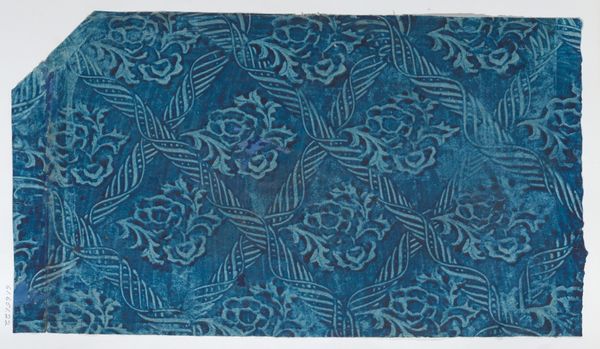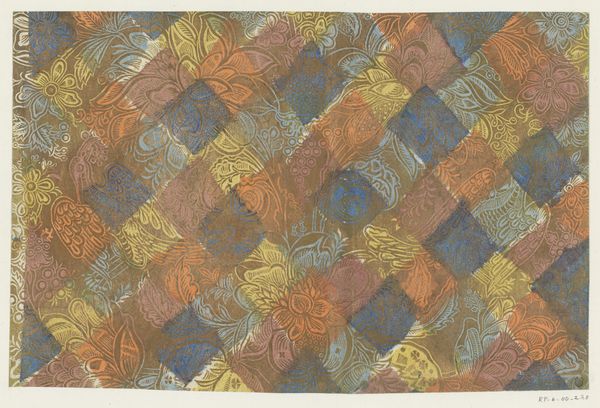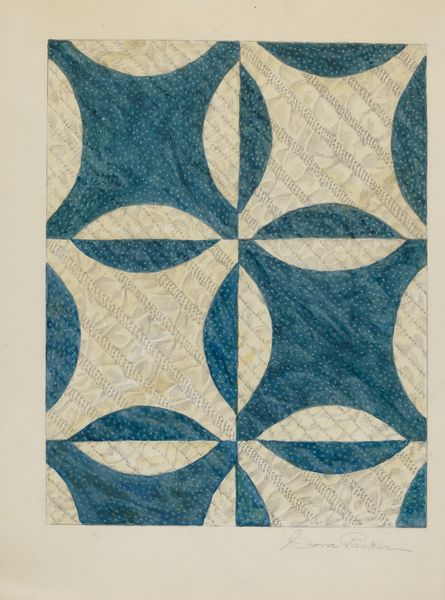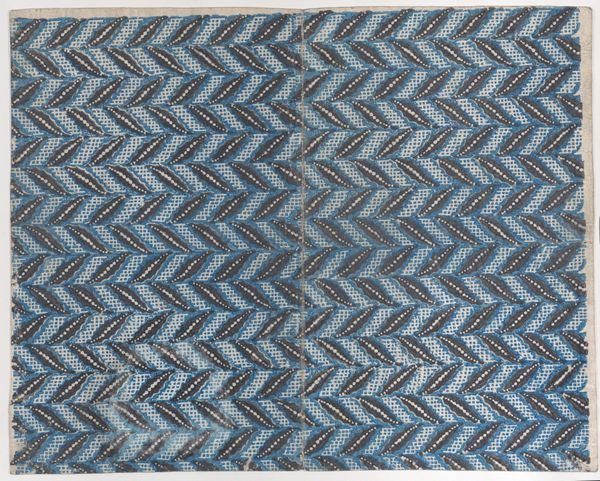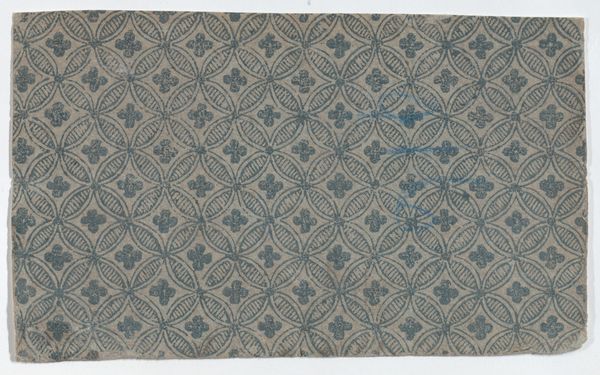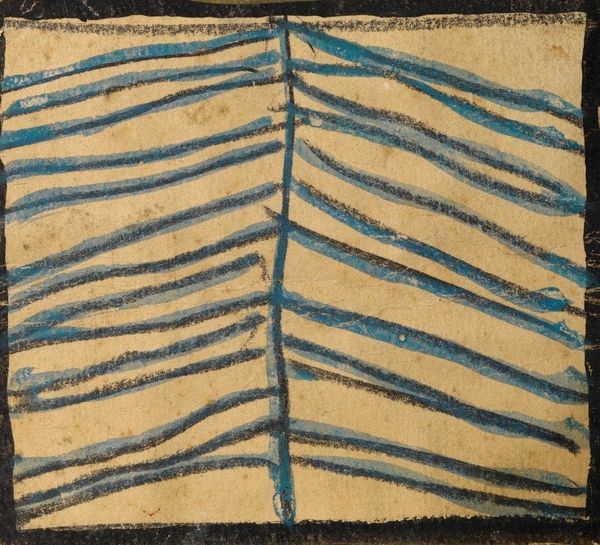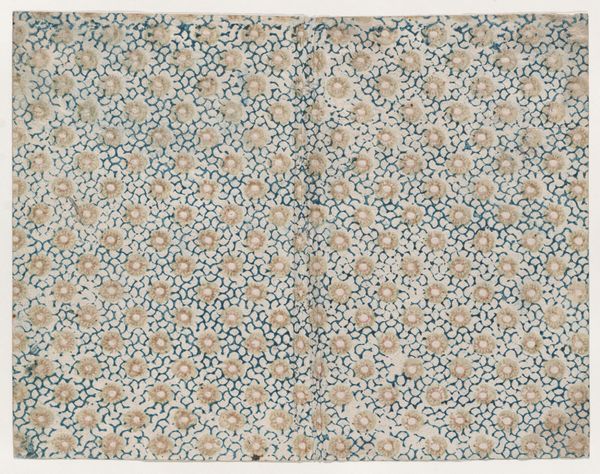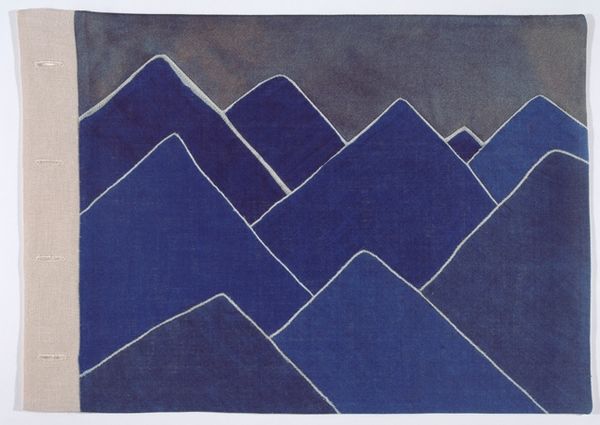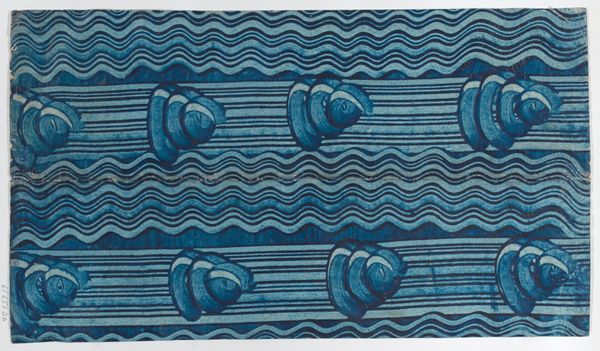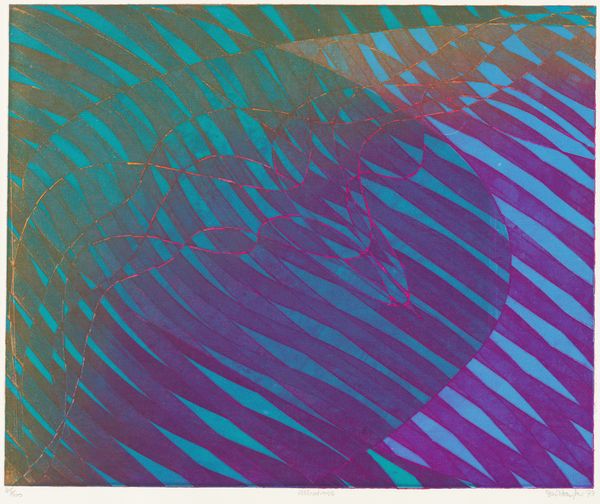
Blue paste paper with stripe and ribbon pattern 1700 - 1800
0:00
0:00
drawing, print
#
drawing
# print
#
geometric
#
line
#
decorative-art
Dimensions: Sheet: 6 9/16 × 4 1/8 in. (16.7 × 10.5 cm)
Copyright: Public Domain
Curator: This is an intriguing piece titled "Blue paste paper with stripe and ribbon pattern." It’s an anonymous work, likely created sometime between 1700 and 1800. Editor: The initial impression is quite soothing. The simple geometric composition and monochromatic blue palette are calming, almost like gazing at a stylized, tranquil sea. Curator: Absolutely. Decorative arts like these offer insights into daily life. Wallpaper, for instance, even if humble, often echoed broader social hierarchies through materials and design, influencing the perceptions of domestic space, privacy, and status. This one features print and drawing elements, pointing towards accessible luxury in its time. Editor: Focusing on the form, I see a compelling interplay between linearity and movement. The precise stripes give structure, while the looping ribbons disrupt it, introducing an element of playfulness and perhaps even subversion, wouldn't you agree? It feels almost mathematical, each curve a calculated deviation. Curator: The juxtaposition highlights how gendered societal expectations and emerging industrial techniques intersected. Ribbon-like decorations might seem merely aesthetic, but they subtly reflect and often perpetuate rigid social frameworks through coded symbols. Wallpaper patterns became a stage upon which cultural values played out, impacting interior design and taste in a very domestic but meaningful way. Editor: Agreed. It brings to mind structuralist theories, how patterns and their variations establish a visual syntax that communicates intent and aesthetics simultaneously. This design has an intentional irregularity that catches the eye. There's no strict repetition, but the variation exists within firmly set parameters. Curator: Precisely. And given its creation period, this simple piece engages broader discussions of consumption, class identity, and gendered spheres, questioning conventional luxury concepts and the performance of identities. The blue would likely allude to elite connotations through material rarity, yet applied via accessible printmaking means that wealth and its representation are now diffused through social strata. Editor: Indeed. In this tight composition, there's a tension that echoes into broader aesthetic considerations about production, authenticity, and our modern concept of decor, of course. Curator: And what seems like simple, antiquated ornamentation quietly carries deep cultural and sociopolitical threads. Editor: From my point of view, studying the nuances of these historical techniques reveals deeper understanding in what feels deceptively “basic."
Comments
No comments
Be the first to comment and join the conversation on the ultimate creative platform.
